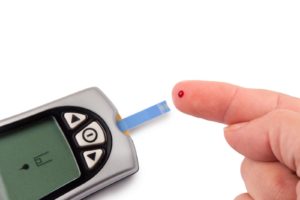Valuable Spotlight on Polycystic Ovarian Syndrome

International Update on Adolescents with Polycystic Ovarian Syndrome
Polycystic Ovarian Syndrome (PCOS) is genetic condition affecting the ovaries starting in adolescence. Symptoms include excess body hair, severe acne, irregular menstrual periods, and elevated androgens (male sex hormones such as testosterone).
In a normal ovary, there is a careful balance of hormones that coordinates the development the ovarian follicles. The ovarian follicles go on to produce the egg that may or may not be fertilized. This hormone balance is disrupted in PCOS causing the growth of follicles without the release of an egg.
Often in PCOS there is insulin resistance which is independent of their degree of body fat or androgen levels. This puts these women at increased risk of developing type 2 diabetes. The insulin resistance is tissue selective. The action of insulin is blunted in skeletal muscle, fat tissue and the liver. However, steroid producing tissues remain insulin sensitive. This contributes to the obesity.
Although not mandatory for diagnosis, women with PCOS have a deregulation of the sex hormones LH (luteinizing hormone) and FSH (follicle stimulating hormone). These hormones control ovulation. This is why women with PCOS often have trouble with infertility.
Treatment of PCOS:
Note: no pharmacological treatment has been approved thus far by the FDA for use in adolescents with PCOS.
- Lifestyle: Weight loss and increased physical activity are recommended as fist line treatment in overweight or obese girls. Some studies showed weight loss and exercise decreases testosterone and other androgens. Physical activity for 30 min/day seemed to resulted in an improvement in cardiovascular risk factors. Calorie restricted diets as well and behavioral therapy have also shown to be helpful.
- Cosmetics: Excess hair removal include bleaching, chemical epilation, plucking, waxing, shaving, electrolysis and laser hair removal. This study recommended laser hair removal.
- Medications:
Metformin: It sensitizes the body to insulin. It was found to be most beneficial if someone was overweight.
Anti-androgens: androgen receptor blockers such as spironolactone, flutamide, progestin, cyproterone acetate and finasteride. If sexually active, anti-antrogens should only be used with adequate contraception or incomplete virilization of male fetuses is a risk.
- Oral Contraceptive Pills: oral contraceptive pills using both estrogen and progesterone can help with hormone regulation. It can also help decrease the free androgens.
Overall, management of PCOS should focus on an appropriate diagnosis, reduction of symptoms and improved health. Specifically, diabetes, preeclampsia and preterm delivery should be managed. Body fat composition should ideally be managed through diet and exercises. Lastly, find a physician with disease specific knowledge for treatment.
The Research
See comment in PubMed Commons below
Horm Res Paediatr. 2017 Nov 13;Vol.(6):307-331. doi: 10.1159/000479371. [Epub ahead of print]
An International Consortium Update: Pathophysiology, Diagnosis, and Treatment of Polycystic Ovarian Syndrome in Adolescence.
Ibáñez L1,2, Oberfield SE3, Witchel SF4, Auchus RJ5, Chang RJ6, Codner E7, Dabadghao P8, Darendeliler F9, Elbarbary NS10, Gambineri A11, Garcia Rudaz C12, Hoeger KM13, López-Bermejo A14, Ong K15, Peña AS16, Reinehr T17, Santoro N18, Tena-Sempere M19, Tao R3, Yildiz BO20, Alkhayyat H21, Deeb A22, Joel D23, Horikawa R24, de Zegher F25, Lee PA26.
Abstract
This paper represents an international collaboration of paediatric endocrine and other societies (listed in the Appendix) under the International Consortium of Paediatric Endocrinology (ICPE) aiming to improve worldwide care of adolescent girls with polycystic ovary syndrome (PCOS)1. The manuscript examines pathophysiology and guidelines for the diagnosis and management of PCOS during adolescence. The complex pathophysiology of PCOS involves the interaction of genetic and epigenetic changes, primary ovarian abnormalities, neuroendocrine alterations, and endocrine and metabolic modifiers such as anti-Müllerian hormone, hyperinsulinemia, insulin resistance, adiposity, and adiponectin levels. Appropriate diagnosis of adolescent PCOS should include adequate and careful evaluation of symptoms, such as hirsutism, severe acne, and menstrual irregularities 2 years beyond menarche, and elevated androgen levels. Polycystic ovarian morphology on ultrasound without hyperandrogenism or menstrual irregularities should not be used to diagnose adolescent PCOS. Hyperinsulinemia, insulin resistance, and obesity may be present in adolescents with PCOS, but are not considered to be diagnostic criteria. Treatment of adolescent PCOS should include lifestyle intervention, local therapies, and medications. Insulin sensitizers like metformin and oral contraceptive pills provide short-term benefits on PCOS symptoms. There are limited data on anti-androgens and combined therapies showing additive/synergistic actions for adolescents. Reproductive aspects and transition should be taken into account when managing adolescents.
© 2017 S. Karger AG, Basel.











